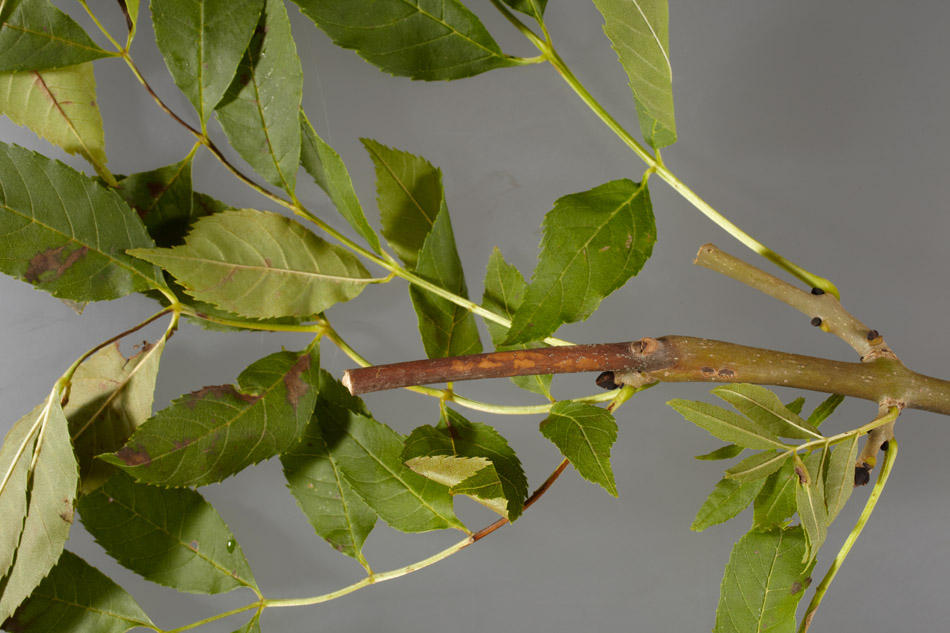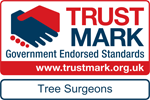What is ash dieback disease?
Ash dieback is a serious fungal disease, caused by the fungus Hymenoscyphus fraxineus, that can affect ash trees of all ages. The Woodland Trust estimate that it could kill around 80% of ash trees across the UK. As ash (Fraxinus excelsior) is one of the most common trees in the UK this disease could change our landscape forever!
A young tree infected with ash dieback could be dead within one season. Mature trees will survive several seasons of infection before succumbing to the disease. Some older, more mature, ash trees can survive the infection.
This disease is no risk to animals and humans.

How widespread is ash dieback disease in the South?
Unfortunately, the whole of the UK is now affected by ash dieback. It originated in Asia and has spread rapidly across continental Europe throughout the last 30 years. It was first recorded in the UK in 2012 but could’ve been around some years before it was noticed.
Ash dieback was first confirmed in Hampshire in 2014 and has been spreading ever since. Cases have been confirmed by Southampton City Council across a small number of council sites in the city.
Hampshire Highways carry out regular surveys of ash trees along the highway network. In 2018 they reported that less than 5% of the trees adjacent to the highway displayed severe signs of dieback, but this number is increasing. They point out that most trees adjacent to public highways, within falling distance, are the responsibility of private landowners and that all landowners have a legal duty to maintain their trees.
What are the symptoms of ash dieback?
Ash dieback symptoms include:
- Dark patches and blotches on the leaves that eventually turn black and wilt.
- Dark brown, diamond-shaped lesions where branches meet the trunk
- Unseasonal leaf loss and crown dieback
- Extensive dieback of shoots, twigs and branches
- Previously dormant buds start growing new shoots





If you would like peace of mind for your trees we can offer a professional opinion – get in touch with us if you suspect your tree has ash dieback
What should I do if I spot ash dieback in my tree?
Remember that you have a legal duty to maintain the trees on your land and liabilities can arise if trees and branches fall. You should ensure that any trees are inspected appropriately, and that action is taken so that these trees do not constitute a hazard. Especially if the trees are within falling distance of a public highway.
You should monitor the condition of the tree. Pruning and felling maybe required if the tree becomes a threat to public safety or your property.
Removal all ash leaf litter in the autumn and winter by burning, burying or composting in situ. You can put them in the normal rubbish bin but do not put in green waste bins for composting as this could go on to infect other ash trees.
You should also report it to Forest Research’s TreeAlert so that they can monitor changes to its distribution nationwide and advise local woodland managers
Do I need to have an infected tree felled?
Ash tree owners should take a balanced and proportionate approach. Not all infected trees need to be removed. Sometimes the disease can be managed with careful pruning. Some older, more mature, ash trees can survive the infection. But typically infection is fatal with young trees dying within one season and mature trees surviving several seasons.
As the tree weakens from the disease it can become more susceptible to other aggressive diseases. Dying trees can also be a safety hazard to people and property, in which case we would recommend felling or removal.
Ash dieback can also cause lesions at the base of ash trees which can facilitate colonisation of secondary pathogens like honey fungus. This can lead to structurally unstable trees.
Healthy ash trees should not be pruned or felled unless that are other managements reasons to do so. A precautionary measure is not required.
What are Climbers Way doing about Ash Dieback?
We are providing services to help identify trees infected by ash dieback in Southampton, Winchester, Oxford, Guildford and the surrounding areas.
Our qualified tree surveyors will inspect your tree and confirm whether its infected. If an infection is found we will make recommendations as to the best course of action, and can carry out any work if required, such as pruning, felling or dismantling.
When we work with an infected ash tree, we do our best to stop the local spread of ash dieback. It is important to minimise the spread of the fungal spores. We do this by:
- Burning, burying or deep composting all infected ash waste material.
- Cleaning our boots and equipment before and after working around ash trees, diseased or otherwise.










